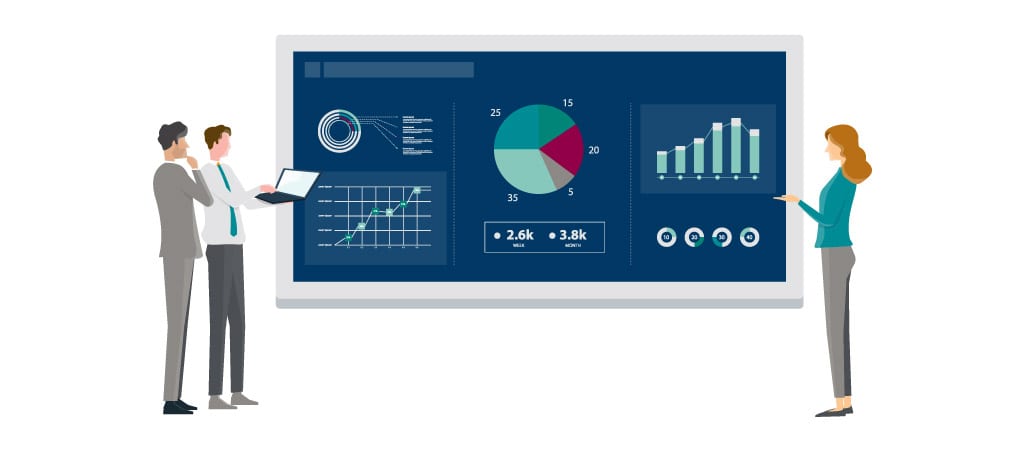5 Strategies to Modernize Insurance Financial Close Processes
Blog post
Share
As insurance providers continue to grow their client base, transactional volumes increase along with overall offerings, making the back-end accounting processes become more complex. While the front office utilizes automation technology in order to process claims, assess risk, and enhance customer experience, the back office is often behind the curve, relying on spreadsheets and other manual methods to complete the financial close. This not only delays the close but also further exposes insurance companies to risks.
“Finance departments have the opportunity to be at the axis of strategy, analytics, and digital transformation.” –Enrique Martinez, Auxis
Modernizing finance can mean many things; whether it’s a simple process change or an overhaul of a finance organization’s operations, finance modernization benefits insurance providers through automation and analytics. While the financial automation transition is not a one-step solution, we have provided five strategies to keep in mind while navigating the path from manual to modern.
1. Evaluate Your Financial Close Process
Before engaging in a process shift with digital and automated technologies, accountants must examine and evaluate their own processes to find areas that require improvements. The path to automating and modernizing processes and operations can take time to accomplish. Organizations might consider tackling current disruptions in the financial close rather than taking on a complete overhaul.

Ask yourself and your team questions to pinpoint areas that require help. Does your method of balance sheet reconciliations further delay the close? How much time is dedicated to routine, manual work? Is your accounting team able to stay ahead of regulatory requirements? By reflecting on the areas of improvement in your insurance Office of Finance, you can highlight those key areas and adjust accordingly.
2. Implement an Automated Reconciliation Solution
When relying on outdated processes such as spreadsheets, accountants may find themselves dedicating a large portion of the financial close to matching transactions and balancing those accounts. Focusing on repetitive, manual tasks such as these means accountants are dedicating their valuable time on reconciliations rather than value-adding and strategic activities to the organization.
Implementing an automated solution for reconciliations will allow finance teams to focus their time on investigating exceptions and ensuring that all controls are operating consistently.
3. Analyze Financial Close Data
In the last few days of the close period, accounting teams dedicate their hours to ensuring all numbers line up, match, and balance. When workplaces close the books through spreadsheets and manual effort, the process of each close becomes challenging to analyze. Any setbacks in the financial close – whether from a completion, review, dependency, or approval standpoint – can be overlooked, meaning the same delays and challenges may occur in future closes. This can create significant bottlenecks and further extend close processes.

By having complete visibility into financial close data, finance leaders can get a real-time overview of the close. Any bottlenecks or delays in the completion of tasks can be pinpointed and optimized for the future. By tracking and analyzing the top-level metrics, leaders can pinpoint areas for improvement and identify other places where there is little need for change. While financial close data can be overwhelming to grasp, it is essential in determining which aspects of the close need minor process improvements and which areas need a complete operational overhaul.
4. Enhance Business Continuity
In a time where many insurance practices are operating remotely, a smooth remote working experience is crucial. Completing the financial close virtually can be difficult when relying on emails and daily meetings to remain up to date on the progress of the close.
Getting real-time updates on the financial close through cloud-based task software can enable team members to get a glimpse of outstanding tasks, additional feedback, and attached documents. Even when unprecedented circumstances adjust the way that work is being completed, getting a first-hand view at what needs to be done and when it needs to be completed further streamlines remote operations.
5. Incorporate a Task Solution
The financial close cycle requires many tasks and contains multiple deadlines that finance professionals must meet. Without a task solution in place, insurance accountants may find themselves overwhelmed with upcoming projects.

Using a spreadsheet calendar to identify outstanding tasks or assigning tasks verbally or through emails contributes to a lack of visibility and transparency for all members involved. The lack of visibility of dispersed documents can cause frustration for financial leaders; keeping all attachments in one centralized location ensures all teams are organized. Consolidating tasks alleviates the transparency issue, allowing leaders to have a holistic view of where they are in the close process at all times.
By pinpointing areas for improvement in the financial close, insurance F&A teams can modernize their processes and ensure all team members are fully equipped to close the books on time, limit risk, and become more strategic with their time. Discover how optimizing these operations can enable finance teams to make the most with Auxis and Trintech’s joint webinar from Trintech Connect.
Written by: Alex Clem







